Apple's 2010 MacBook Air (11 & 13 inch) Thoroughly Reviewed
by Anand Lal Shimpi on October 26, 2010 10:08 PM EST- Posted in
- Mac
- Apple
- MacBook Air
- Laptops
I remember falling in love with the original MacBook Air. It wasn’t the styling that won me over, but rather the combination of performance, form factor and battery life. I needed a notebook fast enough for me to get work done when necessary, but with long enough battery life to last me through a trip across the country. Back in 2008, the MacBook Air was the perfect solution to that problem.
The original MacBook Air had three main issues. It was hot, the 1.8” HDD was unbearably slow, and it shipped with 2GB of memory that you couldn’t expand to 4GB. It was a great machine for writers as you could open up TextEdit and hammer out a document for five hours straight. And when you needed to, you had the greater-than-Atom performance to get more intensive work done.
What prompted me to stop using the MacBook Air was the second generation unibody MacBook Pro. Apple ramped up battery capacity enough where I could get much better battery life and performance out of the MacBook Pro. The combination of the two was enough for me to let my MacBook Air collect dust. I hardly ever used it after that point.
Apple updated the MacBook Air hardware since its original release, but the updates were nothing spectacular. Apple moved from an Intel supplied chipset to one made by NVIDIA, and SSDs eventually became standard issue. Battery life didn’t get any better and memory sizes never moved beyond 2GB.
Last week Apple announced the biggest upgrade to the MacBook Air since 2008, complete with a redesign, price reduction and improved internals. Let’s start at the redesign.
There Once Was One, Now There's Two
The original MacBook Air was very light on connectivity. It had an angled MagSafe power connector but that was it for visible ports. The right side of the machine was home to three hidden connectors: mini DisplayPort, USB and line out.

The new MacBook Air (left) vs. the old MacBook Air (right)
The new design forgoes the rounded nature of its predecessor and introduces more angular surfaces toward the rear of the machine. Connectors like flat surfaces so Apple outfitted the new MacBook Air with a pair of USB ports (one on each side) in addition to the MagSafe connector, miniDP out and line out. Everything is fully accessible from the start, nothing is hidden behind any secret panels.
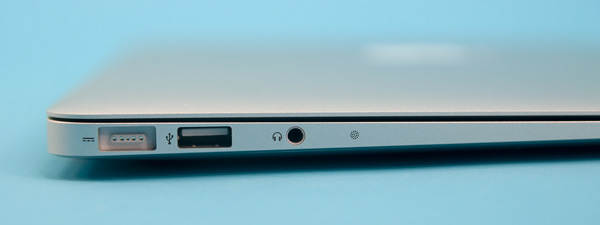
From left to right: MagSafe Power Connector, USB 2.0 port, headset jack, microphone
Next to the headset jack on the left side is the integrated microphone. Apple states it is an omnidirectional mic, but its placement is curious given the original MacBook Air had its mic at the top of the screen bezel. The microphone’s left leaning location didn’t negatively impact audio performance in our tests. As long as you’re not sitting to the right of a horribly noisy person/animal/box you should be good to go.
There are of course now two MacBook Airs that make up the family: an 11.6-inch model and a 13.3-inch model. The two have identical port layouts however the 13-inch MacBook Air gets an integrated SD card reader like its Pro siblings.
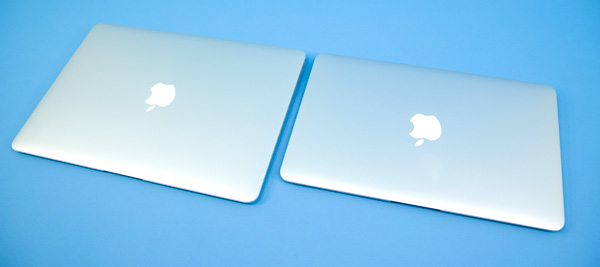
13-inch MBA (left), 11-inch MBA (right)
There’s a 0.6 pound difference between the two models and associated difference in dimensions:
| MacBook Air Size Comparison | ||||
| 11-inch | 13-inch | |||
| Height | 0.11 - 0.68" (0.3 - 1.7 cm) | 0.11 - 0.68" (0.3 - 1.7 cm) | ||
| Width | 11.8" (29.95 cm) | 12.8" (32.5 cm) | ||
| Depth | 7.56" (19.2 cm) | 8.94" (22.7 cm) | ||
| Weight | 2.3 lbs (1.06 kg) | 2.9 lbs (1.32 kg) | ||
Prices and specs differ as well. The 11-inch starts at $999 while the 13-inch starts at $1299. You can get faster CPUs in the 13-inch, while GPUs and memory options remain the same across the line. SSDs are not only standard but they're the only option for storage on the Airs. Given my infatuation with SSDs, you won't see me complaining. I'll be happy when Apple ships all of its systems with SSDs in their default configurations.
| MacBook Air Spec Comparison | |||||
| 11-inch | 13-inch |
13-inch (Late 2008)
|
|||
| CPU | Intel Core 2 Duo 1.4GHz (1.6GHz optional) | Intel Core 2 Duo 1.86GHz (2.13GHz optional) | Intel Core 2 Duo 1.86GHz | ||
| Memory | 2GB DDR3-1066 soldered on-board (4GB optional) | 2GB DDR3-1066 soldered on-board (4GB optional) | 2GB DDR3-1066 soldered on-board | ||
| GPU | NVIDIA GeForce 320M | NVIDIA GeForce 320M | NVIDIA GeForce 9400M | ||
| Storage | 64GB SSD (128GB optional) | 128GB SSD (256GB optional) | 128GB SSD | ||
| Connectivity | 802.11a/b/g/n Bluetooth 2.1 + EDR | 802.11a/b/g/n Bluetooth 2.1 + EDR | 802.11a/b/g and draft-n Bluetooth 2.1 + EDR | ||
| Battery Capacity | 35 Whr | 50 Whr | 37 Whr | ||
| Dimensions |
11.8 " x 7.56 " x 0.11 - 0.68" (29.95 cm x 19.2 cm x 0.3 - 1.7 cm) |
12.8 " x 8.94 " x 0.11 - 0.68" (32.5 cm x 22.7 cm x 0.3 - 1.7 cm) |
12.8 " x 8.94 " x 0.16 - 0.76" (32.5 cm x 22.7 cm x 0.41 - 1.9 cm) |
||
| Weight | 2.3 lbs (1.06 kg) | 2.9 lbs (1.32 kg) | 3.0 lbs (1.36 kg) | ||
| Price | $999 | $1299 | $1799 | ||
Memory & CPU Upgrades: Good News and Bad News
I always like hearing the bad news first so I’ll treat you all no differently. The new MacBook Air not only comes with a meager 2GB of memory, but it’s also soldered onto the motherboard just like in the previous generations.
Now the good news: after two years of complaining Apple has finally added a 4GB memory option. It’s not end user upgradeable, but for an extra $100 Apple will solder 4GB of memory onto the MacBook Air’s motherboard instead of 2GB.
If you’re really just going to be using this thing for writing, IMing and browsing the web - 2GB is fine. If you plan on doing more than that, you should consider spending the $100 on the 4GB upgrade. Right now I’m using 1.46GB of memory. I can edit only a handful of photos in Photoshop before I start swapping to disk.
Apple priced CPU upgrades similarly, but there’s a catch. The base $999 and $1299 (11/13-inch) MacBook Airs can’t be the recipient of an upgraded CPU. You have to go to the upgraded 11/13-inch configurations, which are both $200 more expensive before you get the option to upgrade the CPU for another $100. The upgraded models just give you larger SSDs and nothing else, so if you don’t need the space then the seemingly affordable $100 CPU upgrade actually ends up being a $300 upgrade.
If you want my advice I’d stick to the base systems so long as your needs are simple. However if you plan on doing any amount of multitasking or heavy work (e.g. content creation, editing) on this machine I’d recommend at least the $100 memory upgrade to 4GB. And if you plan on keeping the MacBook Air for a while, spring for the upgraded CPU. It’ll make the later years of its life a little more bearable.
The Trackpad
Going back to my old MacBook Air was always weird. It lacked the glass trackpad that I’d grown accustomed to. The trackpad just felt rough. The new Airs move to the same type of glass trackpad as the rest of Apple’s mobile lineup. Also gone is the traditional mouse button, the glass trackpad pivots at the top so the entire surface acts as a mouse button.
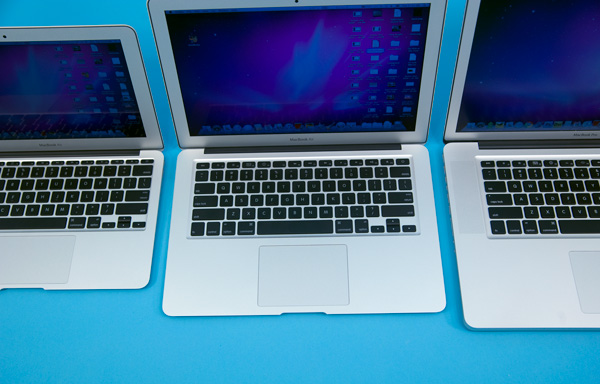
From left to right: 11-inch MBA, 13-inch MBA, 15-inch MBP
Multitouch gestures are supported by the glass trackpad.
No Optical Drive, OS X Recovery via USB Stick
The original MacBook Air didn’t have an optical drive. The new models are no different. When I bought my first Air I actually purchased the external SuperDrive, thinking I’d use it. To be honest, I’ve only used it when doing weird things to the MacBook Air for reviews on AnandTech. I won’t go as far as to say that no notebooks need optical drives, but the absence of one in the MacBook Air isn’t that big of a deal.
Unlike the original MacBook Air, Apple doesn’t bundle these two puppies with recovery DVDs. In case you get an 8GB USB stick with OS X and all bundled apps on the drive. If you need to restore your machine, pop the USB stick in and hold down the ‘c’ key while you start the Air. Apple was even kind enough to etch the version of the OS and application suite on the USB stick itself in case you accumulate a bunch of these over time.
I must say this is the ideal way to distribute OS X recovery software. The USB stick isn’t write protected so you could always do something silly like erase it, but I’m willing to take that risk for the convenience benefit. I expect that next year’s MacBook releases may bundle a similar stick if Apple is feeling particularly forward looking.
No Backlit Keyboard, No Ambient Light Sensor, Same Old Power Brick
Neither of the new MacBook Airs have a backlit keyboard. I do a lot of writing in bed at night and I do miss the backlit keyboard. For touch typists it’s not a problem, but if you switch between the MacBook Air and other computers regularly you’ll find yourself fumbling for the function keys in the dark. I'm guessing this was a cost savings measure.
The top of the screen bezel only has a cutout for the VGA camera, there’s no ambient light sensor. That means you don’t get auto adjusting screen brightness (which some may consider a good thing).
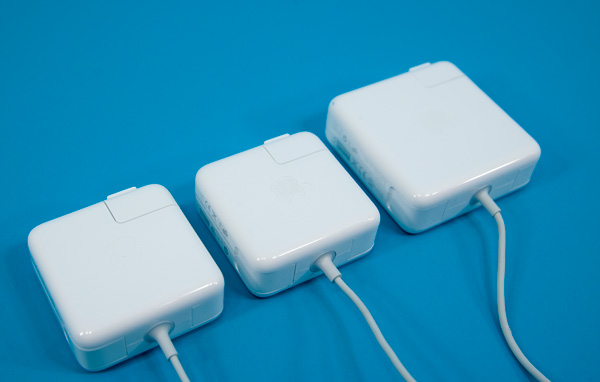
From left to right: new MBA power adapter, old 2008 MBA power adapter, 2010 MBP power adapter
Both Airs come with the same 45W MagSafe power adapter, which just happens to be the same power adapter as the old 2008 MBA (with a new connector of course):
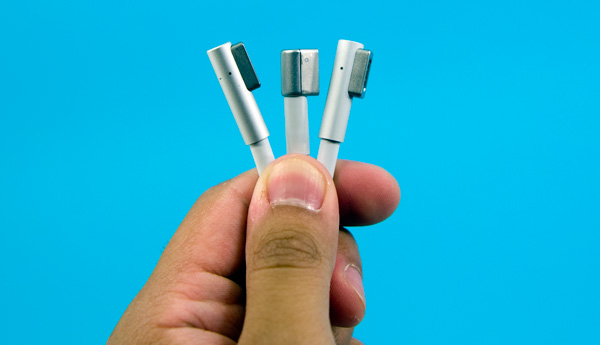
From left to right: 15-inch MBP power connector, 2008 MBA power connector, 2010 MBA power connector
No Flash Installed by Default
So this is weird. The new MacBook Airs are the first Macs to ship in a long time without Adobe's Flash Player plugin installed by default. That's right, if you open your brand new Mac, launch Safari, visit youtube.com and try to watch a video you'll get this screen:

Apple encourages its users to go download the latest version of Adobe's Flash Player to enable the functionality, but this flies in the face of Apple's "it just works" usage model. Watching flash video no longer just works on Macs. You have to go out and download something to make it work. It sounds awfully PC like (gasp!).
Obviously Apple isn't the biggest fan of Flash. The technology isn't supported (and most likely never will be) on iOS. Removing it from the default OS X install makes Apple's intentions clear: it wants Flash dead.
There's also the security aspect. Apple wants to keep its OS as secure as possible and Flash vulnerabilities have been a problem in the past. By not shipping OS X with Flash on it, Apple avoids shipping an old, out of date and potentially vulnerable version of the player software on its Macs. And by forcing users to download the latest version they'll hopefully have a more secure copy on their Macs.
Now whether or not this next bit is a coincidence I'm unsure of. Two of our battery life tests involve loading web pages with Flash on them. My 13-inch MBA sample would throw this error almost every 60 minutes on the dot during the test:

The issue didn't happen on the 11-inch MBA, nor on any of the other MBPs I've run the battery tests on. I've looked around and can't seem to find other reports of Flash being unusually unstable on the new MBAs so it's quite possible that this is an isolated (but unusually repeatable) problem. I've alerted Apple and I'm trying to see if they can reproduce it on any other hardware aside from my 13-inch model. What bothers me is that the the error is very reproducible. I'm going to keep pounding on the system to see if I can figure out what's going on. If I find anything, rest assured I'll publish it here.


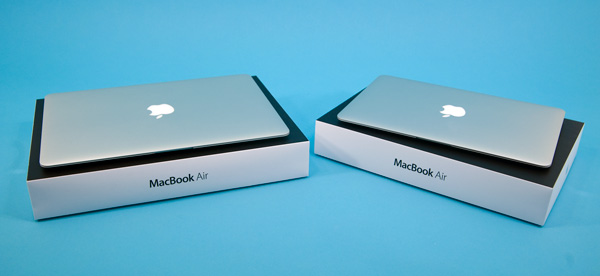
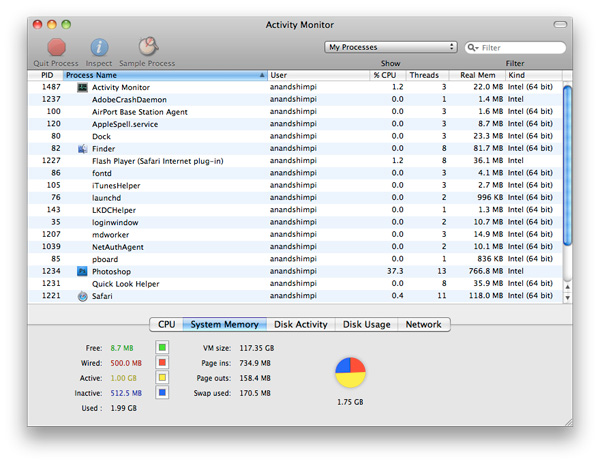
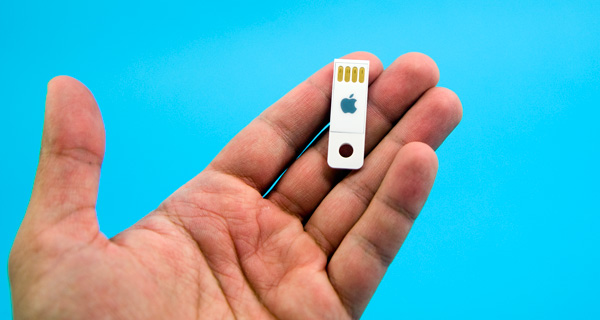
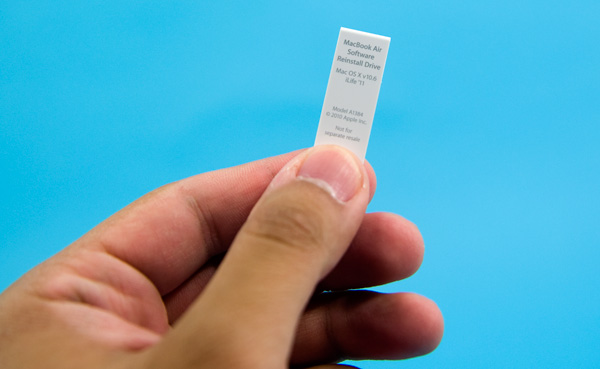
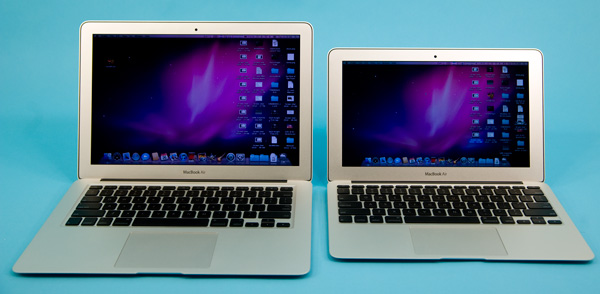








185 Comments
View All Comments
VanHoward - Wednesday, October 27, 2010 - link
Instead of "jives with" should be "jibes with" ...Exelius - Wednesday, October 27, 2010 - link
I'm a huge Apple fan - but I'm just not drinking the kool-aid on this one.I have a 15" MBP and it's really not that bad to carry around. It also gets like 5-8 hours of battery life (3-4 with VMWare running) and it runs Windows 7 under VMware very well with 8 GB of RAM. I've never considered portability an issue and while it's an expensive machine, I don't think you'd own an MBA. I doubt the MBA would have nearly that type of battery life under VMWare.
The iPad seems like a better form factor for the "couch computer" (i.e. looking up shit on IMDB or googling something to settle an argument while watching football.)
IMO the MBA seems like a poor man's MBP. i.e. for students looking for a cheaper computer; the "super-thin" part seems almost like a gimmick to convince people it's a premium product. Really, the only drawback of the 15" MBP (even the lowest-specced one) is the price.
joe_dude - Wednesday, October 27, 2010 - link
The thing's hardly faster than my Ion netbook. There will be lots of thin designs coming out like what Intel showed at Computex. Core 2's two generations behind.For now, I think the Acer TimeLineX 3820TG is still the best ultraportable laptop (certainly the fastest anyway).
zsero - Wednesday, October 27, 2010 - link
As for an alternative for sub 5 lbs powerful laptops and as for the M11x being fast: I am typing this line on a Acer TimelineX 3820TG with 450M and switchable HD5650, which is on a totally different level than either the MBA or the Dell (while being half the price).- 3.9 lbs
- it can do 9000-10000 points in 3dmark06 easily with a little bit of raised clocks (one click in AMD GPU tool). In games it's even faster, as the ATI cards are much better in real games than in benchmarks.
- if you are lucky, you can overclock CPU to 3.3 Ghz (or swap to a 580M and OC-it to 3.8 Ghz, with sub-75C temperatures!)
- and easily do 6-8 hours while web surfing
- has dual fan / dual heatpipe cooling
Other than that, it has the most horrible keyboard I have ever seen, with a cheap AUO screen, noisy mic and poor warranty service and a gazillion of running applications, including two real-time virus scanners on the factory install. But a review would be really interesting to see! I seriously think the 3820TG with HD5650 is without alternative in the powerful but portable notebooks, if possible, please make a review about it! (in North America, I think it's only available with 370M processor, while in Asia they sell it with anything up to 640M).
khimera2000 - Wednesday, October 27, 2010 - link
Intresting system, but i wouldent use it. the keyboard looks to have flex under light loads, making me think that although it looks great on the outside the inside might of had to make some structual sacrifices for the bigger specs, not to mention that the lack of a backlit keyboard would make it more inconveniant compared to what i have now.But it does like they are trying to improve there build quality, its just not to the point that i would like.
As nice as the specs are, i just cant bring myself to trust there build quality just yet, however it does look like there at least trying to improve so who knows perhaps there will be an acer on my list of potentials the next time im do for a notebook upgrade.
as for comparison to the air... i think there oppisets in some respects. the air's performance although weak at best can still fit in nearly any bag making it conveniant to find a place to stow it for those who have bags full of books and junk, where as the acer trys to push for a more heavy multimedia experiance with a good compact form facter and a extended battery.
lemonadesoda - Wednesday, October 27, 2010 - link
1/ SD card reader2/ mic on front for skype/VoIP
The 11" netbook would be a absolute winner (and an order of magnitude upgrade for people using Atom netbooks) . But why did they miss the SD card reader? This is so obvious, and a determining feature what makes one brand/model of netbook a winner over another brand/model. Such a simple and cheap port. Even the iPad has an SD card reader!
And what on earth are they doing putting the mic on the side like that? While it *might* be OK when sitting indoors at a tidy desk without other ambient noise, it certainly is not clever in most "real world" situations.
I would love to replace my ever-so-slightly too noisy and underpowered (but magnificent screen and full of ports) SONY W11 netbook. But no, not until Apple fix the mic location and provide an SD slot.
(I use SD slot for camera - saving local or uploading to fileserver/website, for camcorder - and immediate playback of material recorded, for old-fashioned mailing of data/documents, for a TASCAM HQ digital audio recorder, and for file transfer with colleagues and for file backup when out of the office, I need highest possible robust mic for indoor and outdoor skype/VoIP where my office telephone is forwarded to my laptop through SIP )
These two points may seem like tiny features, but I think for many people they are showstoppers.
johnspierce - Wednesday, October 27, 2010 - link
I'm not sure why everyone thinks an SD card slot is a "must have". For one thing, there are still quite a few cameras that *don't* use SD cards (like virtually any high-end DSLR) and putting a technology in your laptop that might not even be viable in 3-5 years is not exactly a good idea. Buy a 9-in-1 card reader. They are like $20. They are about the size of a deck of cards and can handle almost any type of flash.I would MUCH rather have a 3.0 USB than a SD card slot -- infinitely more useful.
kmmatney - Wednesday, October 27, 2010 - link
SD slots are useful for permanent storage. I have an 80GB SSD in my Dell Inspiron 9400 laptop, but needed a little more storage. So I just keep a 32 GB card in the SD slot, and it gave me enough room for everything I need. I use it mainly for documents, presentations, and backups of important work from teh SSD. It only sticks out about 2 mm, so I can keep it on all the time. I've even run VMware images from it, and it wasn't too bad.I agree that a USB 3.0 slot is useful as well, but wouldn't want to lose the SD slot - its like having a second, easily removable, hard drive.
khimera2000 - Wednesday, October 27, 2010 - link
I see it as a replacemenct for the optical drive, since its also used in cameras, video recorders, and ebook readers (i have an SLR that uses these and a ebook) it makes them alot more conveniant since most notebooks come with the slot already. it puts the macbook at a disadvantage becaus now people have to carry around a card reader that would not be neaded on other notebooks.It would be such an inconveniance if i had to drag around a reader with me, and since alot of apple users do photo and video editing it looks like a bad oversight not being able to transfer images and videos without extra required hardware.
Stuka87 - Wednesday, October 27, 2010 - link
So I am posting late here. I read this last night, but was too tired to respond.So now a lot has already been said. But here is one thing that keeps boggling me.
WHY do people keep calling this a Netbook when it clearly *IS NOT*. The 11.6" MBA is an ultraportable. In line with other ultraportables out there. Its not a cheap piece of plastic with a laughable screen, keyboard, graphics, or atom processor. The benchmarks clearly show this machine to run circles around an atom.
And if you compare it to similar machines of weight, size, and speed its not far off the mark from a price concern either.
Is it a perfect machine, no... But it looks like it will fill the gap that has been missing from the Apple product line since the demise of the 12" PowerBook.